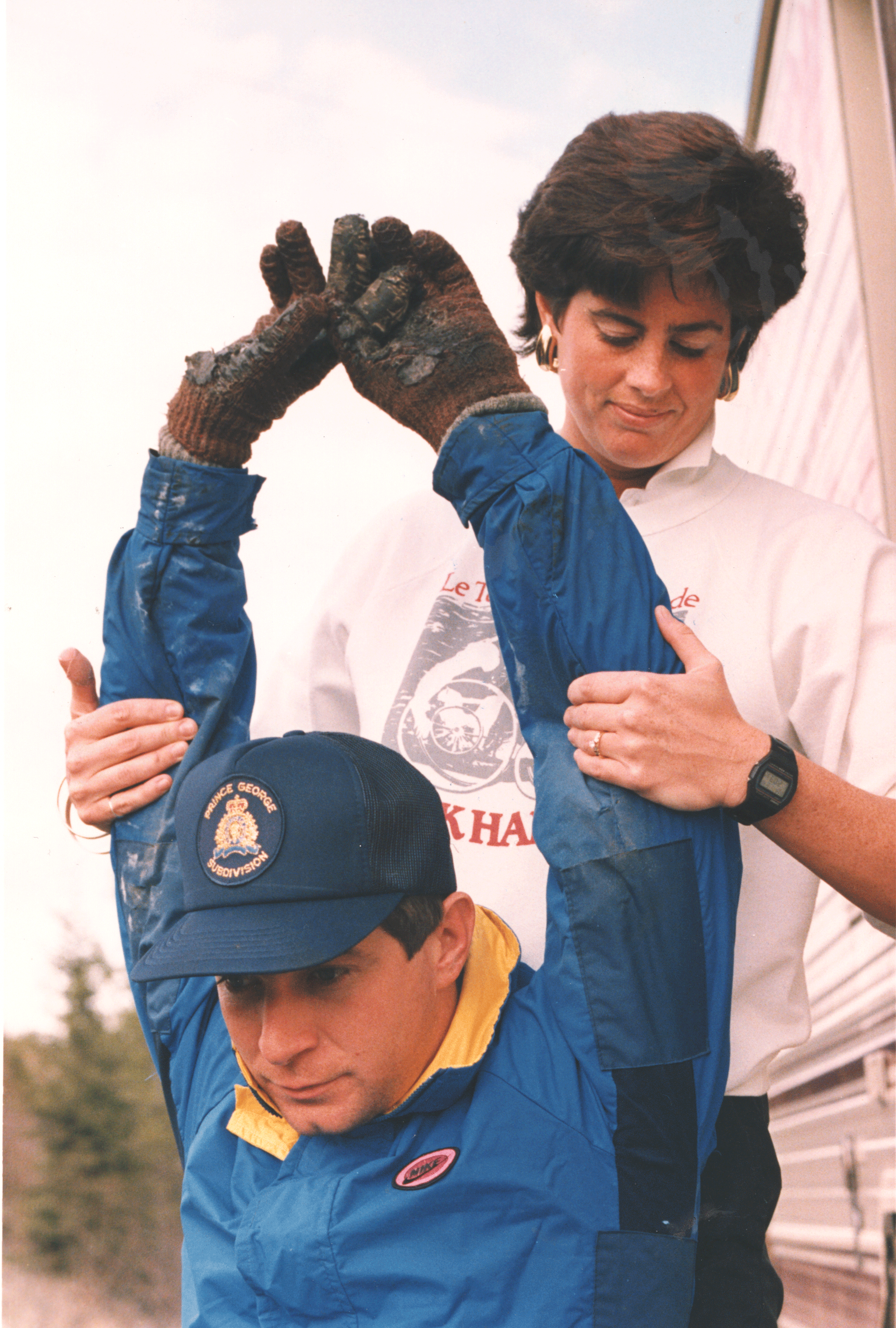Mobile Menu
- Education
- Research
-
Students
- High School Outreach
- Undergraduate & Beyond: Community of Support
- Current Students
- Faculty & Staff
- Alumni
- News & Events
- Giving
- About

Carolyn Morris
 Rick and Amanda Hansen are celebrating the Department of Physical Therapy’s 100th Birthday this month.
Rick and Amanda Hansen are celebrating the Department of Physical Therapy’s 100th Birthday this month.
Physical Therapy Professor Emeritus Molly Verrier remembers the excitement of watching Rick Hansen wheel past on his 1985-87 Man in Motion tour. As a young U of T researcher and clinician focused on spinal cord injury, she was inspired.
The 40,000 km round-the-world wheelchair tour showed how a disability doesn’t need to stop people from achieving big dreams — something Verrier had witnessed first-hand, seeing patients rebuild meaningful lives after spinal cord injuries. The tour also underscored the value of physical therapy.
“Amanda, who was his physical therapist at the time, would work with Rick to calculate the challenges of the next day’s wheel — they were constantly monitoring his physical fitness and adjusting his care,” says Verrier (PTOT ’70). “This was customized therapy years before the era of personalized medicine.”
 Rick and Amanda Hansen do much more than inspire – they are long-time supporters of physical therapy and spinal cord research through the Rick Hansen Institute and major proponents of creating inclusive communities for people with disabilities, through the Rick Hansen Foundation. This month, the couple will be speaking at an event celebrating 100 years of U of T’s Department of Physical Therapy.
Rick and Amanda Hansen do much more than inspire – they are long-time supporters of physical therapy and spinal cord research through the Rick Hansen Institute and major proponents of creating inclusive communities for people with disabilities, through the Rick Hansen Foundation. This month, the couple will be speaking at an event celebrating 100 years of U of T’s Department of Physical Therapy.
“It's an honour to pay tribute to Physical Therapy at U of T, and its 100 years of excellence,” says Rick Hansen. “My life has been dramatically impacted in a positive way by many physical therapists, and I can't think of a better way to express my gratitude than to share the stage with my wife (and former physiotherapist) Amanda.”
“When faced with conditions and situations not found in a textbook, I had to be creative and preventative in my approach,” says Amanda Hansen. “My career has brought me immense fulfillment and gratitude and I am proud to be celebrating the profession.”
 Physical therapy in Canada can be traced back to 1917, with U of T’s Hart House course — a six-month training program launched by the Military Hospitals Commission for the many wounded veterans returning home from the First World War. New to the country, the practice of physical therapy combined medical gymnastics, massage, electrotherapy and muscle training.
Physical therapy in Canada can be traced back to 1917, with U of T’s Hart House course — a six-month training program launched by the Military Hospitals Commission for the many wounded veterans returning home from the First World War. New to the country, the practice of physical therapy combined medical gymnastics, massage, electrotherapy and muscle training.
By the time the Second World War broke out in 1939, U of T-trained physical therapists were ready to serve and given officer rank with Canada’s military to lead remedial exercises for injured soldiers.
U of T physical therapists were also key in providing rehabilitation treatments to polio patients, moving away from the traditional treatment of immobilizing limbs to adopt a new and effective muscle re-education technique.
In the years since, physical therapy at U of T has put increasing emphasis on high caliber research by recruiting leading academics, introducing graduate programs at the PhD level and and attracting post-doctoral scientists. Research streams include studies on physiotherapeutic approaches, enhancing physical activity and exercise, rehabilitation health services and social, cultural and political dimensions of health and disability.
Physical therapy practice and research has also developed by increasing integration within the health care system — with physical therapists and scientists now embedded across Toronto’s academic hospitals, including on organ-transplant units, oncology wards and in cardiorespiratory clinics, and working collaboratively with programs such as the Brain and Spinal Cord Program at the University Health Network’s Toronto Rehab - Lyndhurst Centre and the International Centre for Disability and Rehabilitation.
“Physical therapy at U of T has an incredible history, and with our leading research, education and clinical involvement, we are enhancing clinical care in the field — not only in Toronto, but across Canada and internationally,” says Chair Darlene Reid.
Verrier, who served as department chair from 1994 to 2004 and was instrumental in enhancing the department’s research focus, finds it rewarding to see the impact of the research unfold. For example, following studies showing the cost benefits of enhanced assisted living for patients with spinal cord injuries versus long-term hospitalization, more programs have been introduced to help people transition back into community living.
“There are many more supports now, helping to improve access to society,” she says. “Of course, so much more needs to be done, both in enhancing accessibility and out-patient care as well as funding key physical therapy research targeting function and mobility.”
Role models like the Hansens are helping drive this change — as are events like Toronto’s Invictus Games as well as the success of Physical Therapy alumna and Paralympic athlete Shelley Gautier.
Meanwhile, U of T’s physical therapy researchers, students and alumni continue to make great strides in leading physical therapy in Canada and globally, building on the strength of a 100-year legacy.

